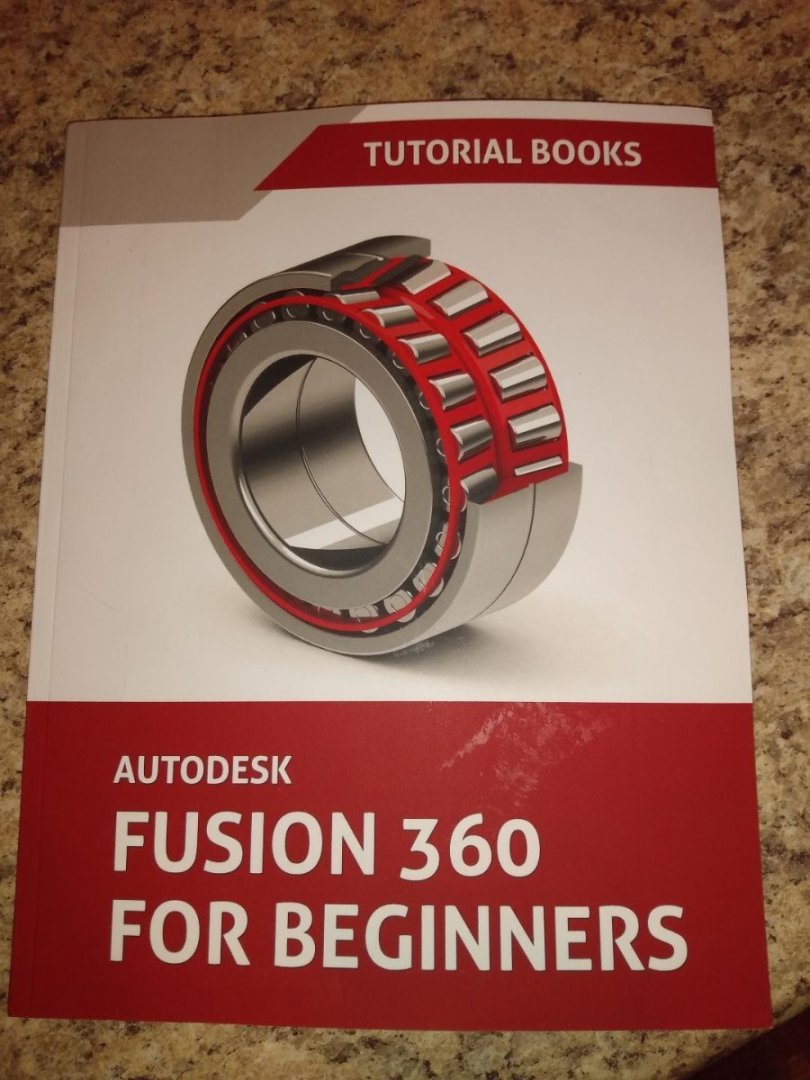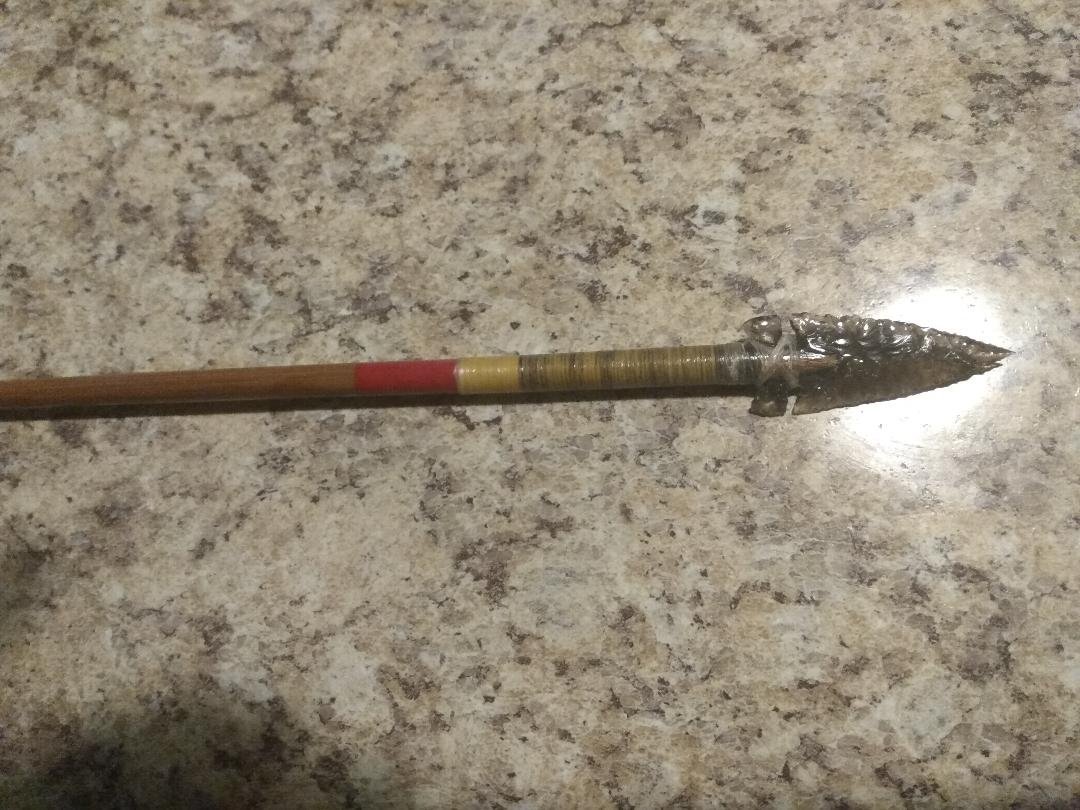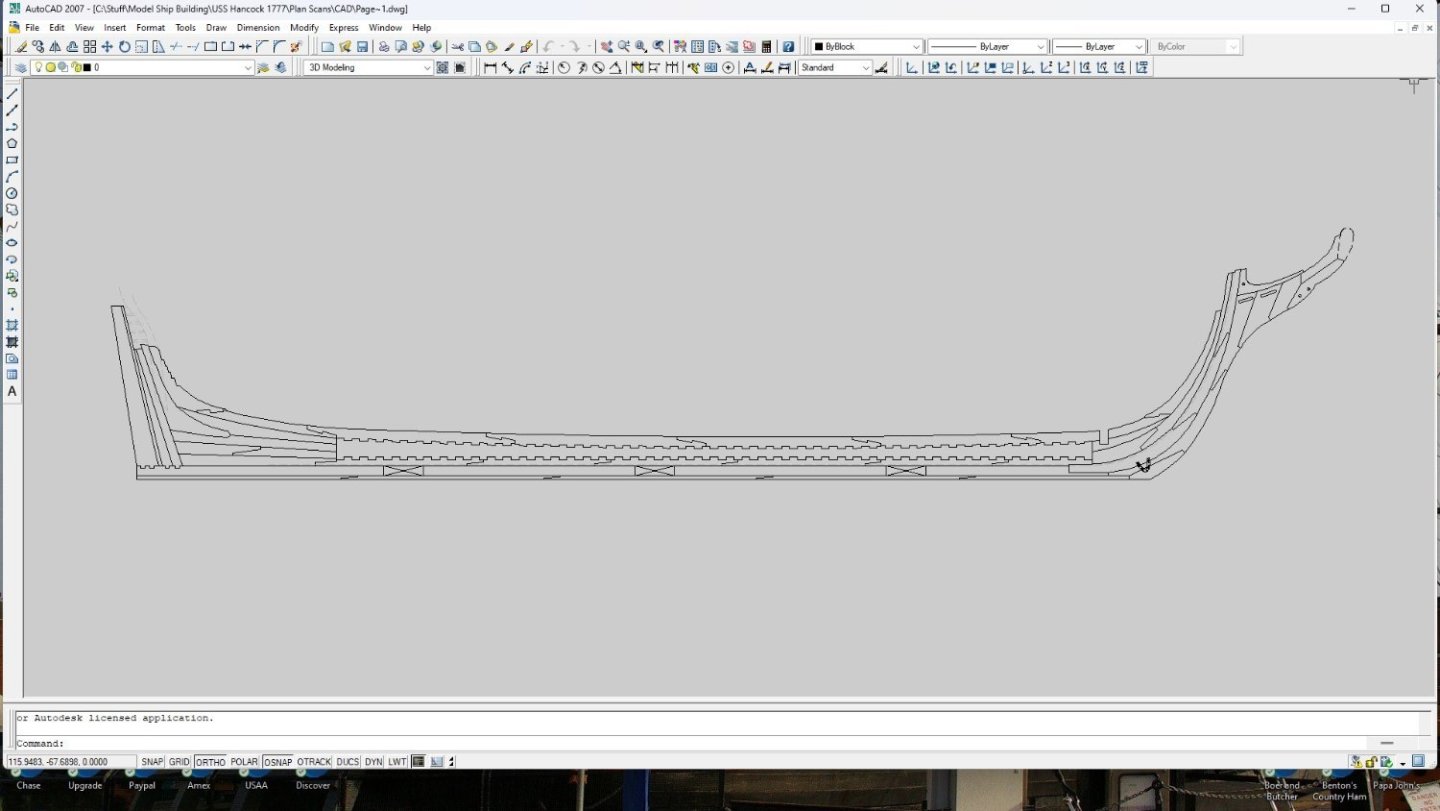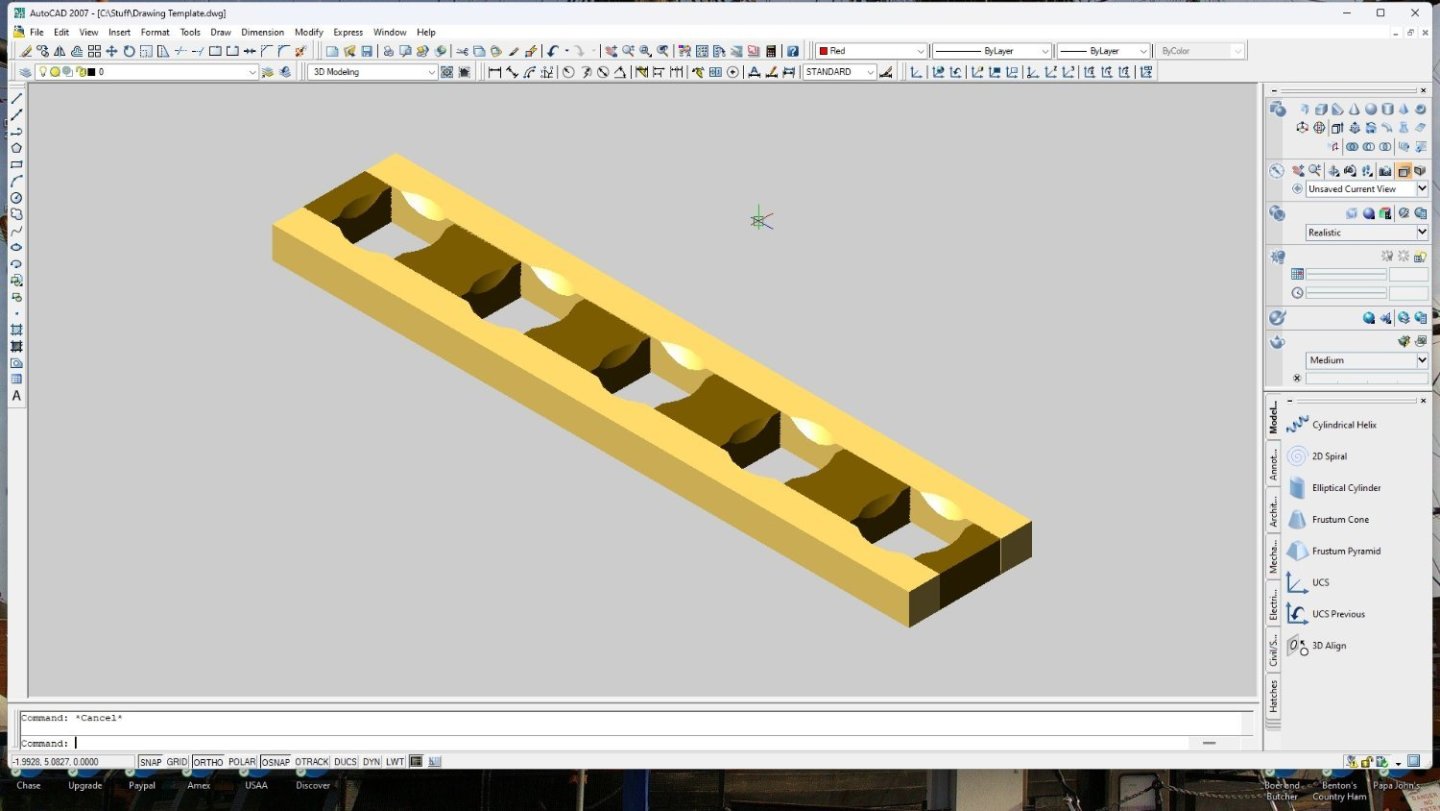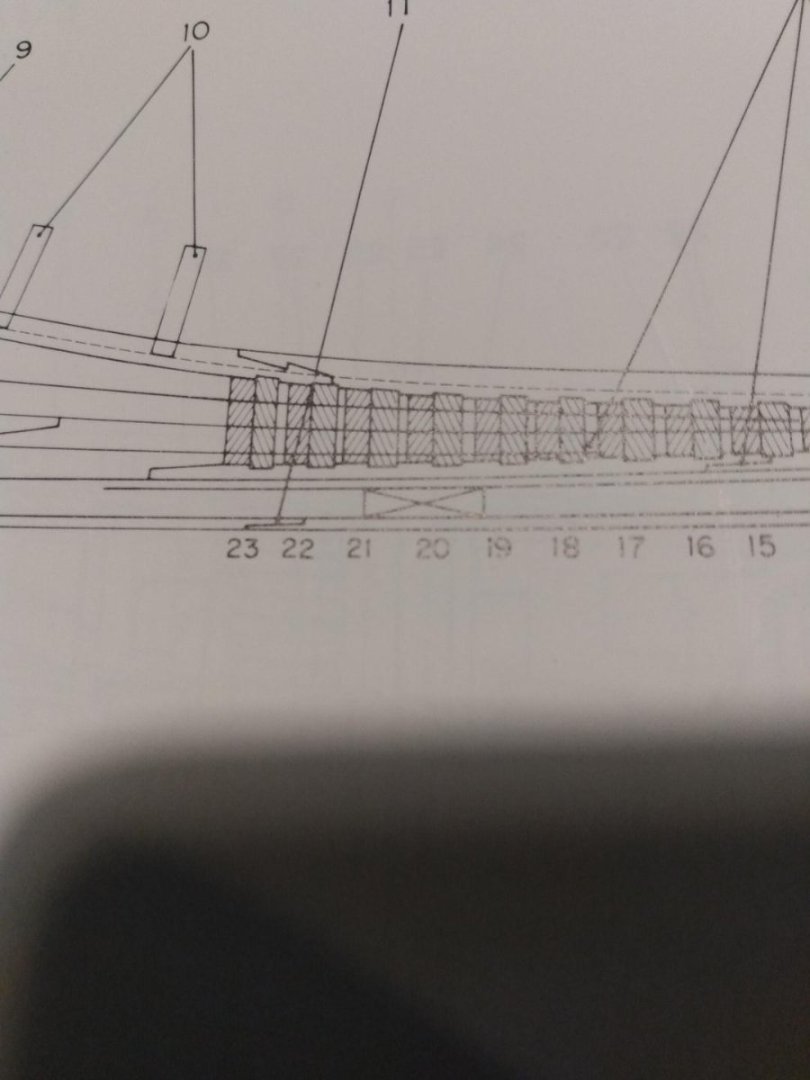-
Posts
730 -
Joined
-
Last visited
Content Type
Profiles
Forums
Gallery
Events
Everything posted by tmj
-

Drafting Frames
tmj replied to tmj's topic in Building, Framing, Planking and plating a ships hull and deck
Thanks Mark. Unfortunately, the ship in question is the Continental Frigate 'Hancock' (captured) aka the 'Iris'. There doesn't seem to be much data out there, for this vessel, other than RMG's plans. -
If the 'Body Plan' offers the exterior geometry of the stations, how does one go about acquiring the 'interior' geometry for those stations? I know that this is a really basic thing for you experienced folks, but I'm stumped!
-

CNC Desktop Router Reviews
tmj replied to tmj's topic in CAD and 3D Modelling/Drafting Plans with Software
Autodesk offers a free version for personal, noncommercial use. -

CNC Desktop Router Reviews
tmj replied to tmj's topic in CAD and 3D Modelling/Drafting Plans with Software
High Gregory! I watched that video back when I was first shopping for my router. It's a good video, however. I'm going to stick with Fusion 360 for the CAM end of things. Fusion 360 will do everything the other CAD/CAM software packages can do. I might even transition over to doing all my 3D modeling in Fusion as well. I just need to go through the ol' learning curve as Fusion 360 does not work quite like AutoCAD. -

CNC Desktop Router Reviews
tmj replied to tmj's topic in CAD and 3D Modelling/Drafting Plans with Software
I'm still struggling to figure out just how Fusion 360 works. My knowledge of traditional AutoCad doesn't seem to apply... and watching Youtube videos isn't proving to be of much help either. I guess I'm just going to have to 'bite the bullet', turn in my "Man-Card" and actually resort to reluctantly reading the written instructions! *sigh* -
No Allan. I have them backwards, "of course!" Another newbie lesson learned! 💩 That's okay. This is just a training model. I need to make as many mistakes as possible on this build in hopes of 'kinda' knowing what I'm doing when I start my next build. Thanks for pointing this out. This is another one of those 'little' things that I'd have never thought would have a right way and a wrong way!
-

Hull and Deck treenails
tmj replied to Loracs's topic in Building, Framing, Planking and plating a ships hull and deck
I used to mess around with primitive archery, bow building, flint knapping and building arrows that were 'spined' in the 70–100-pound range. I used bamboo shafts purchased on eBay, directly from China. They always worked very well and are very tough. I wonder if bamboo intended for arrows would be a good choice for drawing through a plate in small diameters. I still have quite a few unused shafts. I'm going to give this a try, however. I don't yet have a drawplate. Speaking of such. Does anyone know if Jim Byrnes is ever 'really' going to open up for business again??? Below is a bamboo arrow spined for a 90-pound bow. I've never shot this arrow due to the obsidian point, but all of my field points flew really well on the bamboo shafts. I just wanted to show this arrow off. It's the best obsidian point that I ever knapped. 🙂 -

Horseshoe Plates
tmj replied to tmj's topic in Building, Framing, Planking and plating a ships hull and deck
I agree with the shape thing, but not so sure about the size. When looking at the construction methods of the 'Essex', I'd say that the horseshoe shaped 'plate' was quite large... larger than any horse hoof. Yes, I'm curious too. I don't understand the shape. There would definitely be far better plate designs than that! Maybe the old-world builders were just superstitious and simply wanted the inverted horseshoe shape to trap and hold good luck! 🙃 As for the size? The below image is of the 'Essex's' stem, stern and keel. I'm using the Essex to model the construction methods of the 'Hancock'. If the resource I'm using is correct (32 Gun Frigate 'Essex', anatomy of the ship, by Portiat Takakjian) that horseshoe would fit a horse of 'mythical' proportions! Hopefully, someone with more knowledge will be able to chime in and clear up some of the odd-looking details and curious questions. I'll certainly be interested in this as my Hancock build will only be planked from the waterline up. All construction details 'below' the waterline will be exposed. -

Horseshoe Plates
tmj replied to tmj's topic in Building, Framing, Planking and plating a ships hull and deck
Sorry Bob. I sometimes use the search box, but most times I do not. I've grown accustomed to finding everything under the sun 'except' for what I'm truly looking for when I use the forum's search option. It's usually easier and faster to ask a question and get a response like this. 🙂 -

Horseshoe Plates
tmj posted a topic in Building, Framing, Planking and plating a ships hull and deck
Were 'horseshoe' plates, on early American warships, bolted to the exterior of the lower stem timbers, or possibly 'inlayed' flush to the outside of those timbers to keep things streamlined in the water? -

Shot Garlands
tmj replied to tmj's topic in Discussion for a Ship's Deck Furniture, Guns, boats and other Fittings
Got it. "Thanks Gary!" -

Shot Garlands
tmj replied to tmj's topic in Discussion for a Ship's Deck Furniture, Guns, boats and other Fittings
Thanks Gary. I think that these dimensions will be quite doable at 1:98 scale. -

Shot Garlands
tmj replied to tmj's topic in Discussion for a Ship's Deck Furniture, Guns, boats and other Fittings
Were the 68 pounders actually on board during the Trafalgar era? -

Shot Garlands
tmj replied to tmj's topic in Discussion for a Ship's Deck Furniture, Guns, boats and other Fittings
Here's my first thought, unless a different style of arranging the shot would be more proper... like a 'pyramid' or some other configuration for staging the shot... -

Shot Garlands
tmj replied to tmj's topic in Discussion for a Ship's Deck Furniture, Guns, boats and other Fittings
I'm trying to find the approximate diameters of the cannon shot that would be found on all three of HMS Victory's gun decks. I keep finding 'poundage' ratings for the shot, but no actual diameters. I'm searching for the diameters of the shot(s) in order to determine whether or not I can feasibly fabricate scale replicas of the type of shot garland 'construction' presented by Morgan, earlier in this thread. Who here knows what the diameter of what HMS Victory's different size shots would have been? -

Vertical Scarf Joints on Keels
tmj replied to tmj's topic in Building, Framing, Planking and plating a ships hull and deck
I just took a peek at a plan view showing the top of the keel, just to make sure that I did not miss anything. No joints at all are shown on the top/plan view of 'that' drawing of the keel. "It's amazing the stories that can be told with more than one view and the understanding of a 'symbol'! 🙂 -

Vertical Scarf Joints on Keels
tmj replied to tmj's topic in Building, Framing, Planking and plating a ships hull and deck
Allan, 'That' answers the question! Thank you for the plan view and an elevation view! It makes sense now. I've never seen any hidden lines in the drawings that I have looked at. I only see a solid rectangle with an 'X' going from corner to corner. That 'X' does not belong in a mechanical drawing depicting a joint like this, not for true construction. This tells me that the rectangle with an 'X' 'is' just a symbol! I also now understand why such a joint is called a 'vertical' scarf joint! Thank you! Would this joint have been tree-nailed, bolted, or bolted like a sandwich with metal plates being on the port and starboard sides of the joint? -

Vertical Scarf Joints on Keels
tmj replied to tmj's topic in Building, Framing, Planking and plating a ships hull and deck
I understand hidden lines. I just don't know what an 'X' inside of a rectangle means. -

Shot Garlands
tmj replied to tmj's topic in Discussion for a Ship's Deck Furniture, Guns, boats and other Fittings
Thanks Mark. I found a copy on eBay for cheap. It's on its way. -
I keep seeing scarf joints shown on keels, as depicted in the photo below. This rectangular box with an 'X' in it confuses me. Does this symbol mean that the scarf joint could go in either direction, from stem to stern, or vice versa at the builder's discretion? An explanation of what that symbol actually means would be greatly appreciated!
-

Shot Garlands
tmj replied to tmj's topic in Discussion for a Ship's Deck Furniture, Guns, boats and other Fittings
Gary, the depth of your knowledge and your case 'proof's' never cease to amaze me! "Very enlightening and 'always' welcome!" -

Shot Garlands
tmj replied to tmj's topic in Discussion for a Ship's Deck Furniture, Guns, boats and other Fittings
Ahh, okay, I get it now. Thanks Allan! Someday I'll become more familiar with a lot of these old naval architectural terms, but for now... you guys just need to bear with me! Sometimes I feel like 'Curly' from the 3 Stooges. "I'm trying to think, but nothing happens!" 😶 -

Contact Glue
tmj replied to RolBerg's topic in Building, Framing, Planking and plating a ships hull and deck
I used to use contact cement to bond balsa wood sheeting to foam core wings back when I raced R/C pylons (quickie races). The contact cement worked 'great', however. These airplanes also didn't have a very long lifespan. They were cheap, fast, disposable airplanes! I still have two elderly 'Scat-Cats', standby leftovers from my racing days, who's wing skins are effectively separating from the foam cores... and they have never even been flown! I wouldn't trust contact cement, at all, for the long haul... -

Shot Garlands
tmj replied to tmj's topic in Discussion for a Ship's Deck Furniture, Guns, boats and other Fittings
Roger, exactly what do you mean by "The Waterways"? What is a 'waterway'? -

Shot Garlands
tmj replied to tmj's topic in Discussion for a Ship's Deck Furniture, Guns, boats and other Fittings
This is the sort of stuff that I really like to see! I'm definitely going to 'try' to use this construction method on my build, if scale size allows. "Thanks again!"
About us
Modelshipworld - Advancing Ship Modeling through Research
SSL Secured
Your security is important for us so this Website is SSL-Secured
NRG Mailing Address
Nautical Research Guild
237 South Lincoln Street
Westmont IL, 60559-1917
Model Ship World ® and the MSW logo are Registered Trademarks, and belong to the Nautical Research Guild (United States Patent and Trademark Office: No. 6,929,264 & No. 6,929,274, registered Dec. 20, 2022)
Helpful Links
About the NRG
If you enjoy building ship models that are historically accurate as well as beautiful, then The Nautical Research Guild (NRG) is just right for you.
The Guild is a non-profit educational organization whose mission is to “Advance Ship Modeling Through Research”. We provide support to our members in their efforts to raise the quality of their model ships.
The Nautical Research Guild has published our world-renowned quarterly magazine, The Nautical Research Journal, since 1955. The pages of the Journal are full of articles by accomplished ship modelers who show you how they create those exquisite details on their models, and by maritime historians who show you the correct details to build. The Journal is available in both print and digital editions. Go to the NRG web site (www.thenrg.org) to download a complimentary digital copy of the Journal. The NRG also publishes plan sets, books and compilations of back issues of the Journal and the former Ships in Scale and Model Ship Builder magazines.



